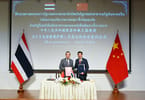Korea has high hopes for hosting Chinese travelers, who are increasing in number worldwide and getting bolder with their overseas spending. By 2020, Korea wants to host 10 million Chinese tourists.
Chinese tourists currently make up one of the largest groups of foreign tourists in Korea after those from Japan. A total of 1.3 million Chinese people visited Korea last year, represent some 17 percent of the total number of foreign visitors.
However, many Chinese were found to be less than satisfied with their travels to Korea, according to recent reports by the nation’s tourism agency conducted in China.
The world’s most populous country rated Korea last among ten destinations in a survey assessing the level of satisfaction of Chinese tourists, according to a recent consumer report by the Korea Tourism Organization (KTO).
Australia, Singapore, Hong Kong, Europe, Malaysia, Japan, Macao, Thailand and Vietnam all placed ahead of Korea.
Many said that they would not recommend Korea to other people.
They cited the lack of Chinese-language signs, high costs, and heavy traffic as the main inconveniences.
Only 28 out of 60 Seoul restaurants designated by the KTO as “foreigner-specific” offer Chinese-language menus. Despite the nation’s push to globalize Korean food, or “hansik,” more than 40 percent of Chinese tourists found Korean food to be “tasteless.”
Chinese tourists also called for eased entry regulations.
“Though the government has established its ‘Visit Korea 2010-2012’ campaign, it is difficult for Chinese tourists to visit Korea with visa,” an official of a tour agency specialized for Chinese tourists said. Efforts between the two countries have been made to allow travelers from the China to visit without a visa.
Korea is seeking a visa waiver program with China for tourists staying for up to 30 days. However, it is unclear whether the plan will be realized.
Due to an increasing number of Chinese travelers and their spending power, many countries across the globe have been making efforts to attract more Chinese visitors.
Last year, Chinese tourists spent around $2.3 billion in Korea.
Shopping was the main reason their coming here, followed by nature activities, hallyu (Korean entertainment) and historical heritage.
Hosting more Chinese tourists is an essential task for Korea’s tourism, especially during the 2010-2012 Visit Korea campaign.
Shanghai was one of the first places where the campaign’s organizers rushed to announce the tourism drive to generate $10 billion in annual tourism revenue and advance Korea’s stature as a tourist destination.
More and more Chinese people are traveling abroad, although 75 percent of Chinese travelers visit only Hong Kong and Macao due to credit card and visa issues.
Despite the global economic downturn, a Chinese state report showed that 47.5 million Chinese travelled abroad in 2009, a 3.6 percent increase from the previous year.
The United Nations World Tourism Organization (UNWTO) projected that by 2020, China will be fourth after Germany, Japan and the United States in the number of outbound tourists.
Currently, about 9 percent of the total number of Chinese travelers going overseas visit Korea. The KTO wants to see the figure go up to 30 percent, considering the geographical proximity between the two countries.
Local governments are launching campaigns of their own to host more Chinese tourists.
Incheon is hoping more than 30,000 senior tourists from China will visit the city this year.
Led by Hong Kong-based Lippo Incheon Development, the port city is developing a leisure town with a Chinese motif within the Incheon Free Economic Zone (IFEZ).
The Incheon Tourism Organization (ITO) said Monday that it has developed a new tour program for elderly Chinese tourists along the West Coast of the Korean peninsula.
The ITO expects some 30,000 Chinese tourists will visit Incheon and the southwestern city of Gwangju from April to October through the program.
The ITO has established connections with several tourist organizations and other senior associations in China.
The West Coast Silver tour is a travel product connecting Incheon, South Chungcheong Province, Gwangju and South Jeolla Province along the coast.
Major tourist attractions include the Incheon Bridge, Compact Smart City ― an exhibition displaying the urban development of Incheon and Songdo ― and Incheon’s Chinatown, which is the biggest in Korea.
The Korea-China Silver Tourism Festival will be held in Incheon in May and in Gwangju in September. The festival includes singing and dancing contests and a golden wedding ceremony for some 20 senior couples from Korea and China.
The ITO aims to develop the festival as a health expo for the elderly in the near future.
“We will create more tour programs in connection with senior education centers and senior welfare centers,” an ITO official said. “In the long term, we want the festival to be a health expo for seniors.”
WHAT TO TAKE AWAY FROM THIS ARTICLE:
- The world’s most populous country rated Korea last among ten destinations in a survey assessing the level of satisfaction of Chinese tourists, according to a recent consumer report by the Korea Tourism Organization (KTO).
- Shanghai was one of the first places where the campaign’s organizers rushed to announce the tourism drive to generate $10 billion in annual tourism revenue and advance Korea’s stature as a tourist destination.
- The Incheon Tourism Organization (ITO) said Monday that it has developed a new tour program for elderly Chinese tourists along the West Coast of the Korean peninsula.






















